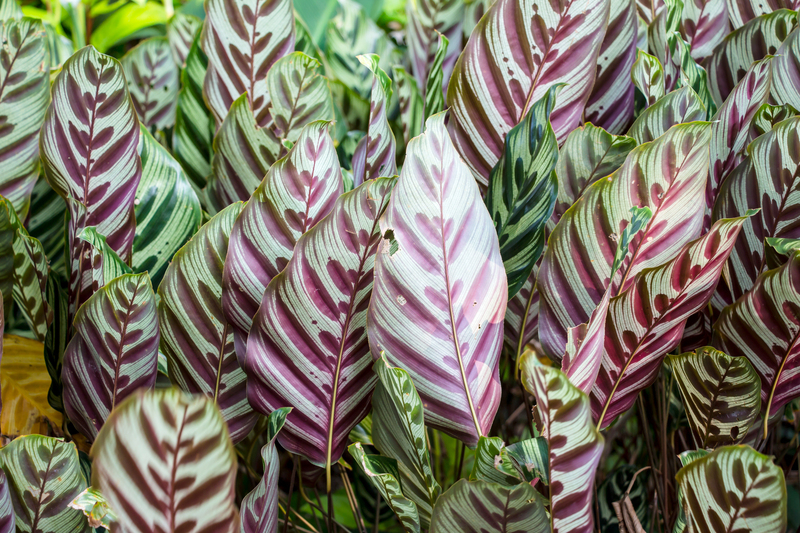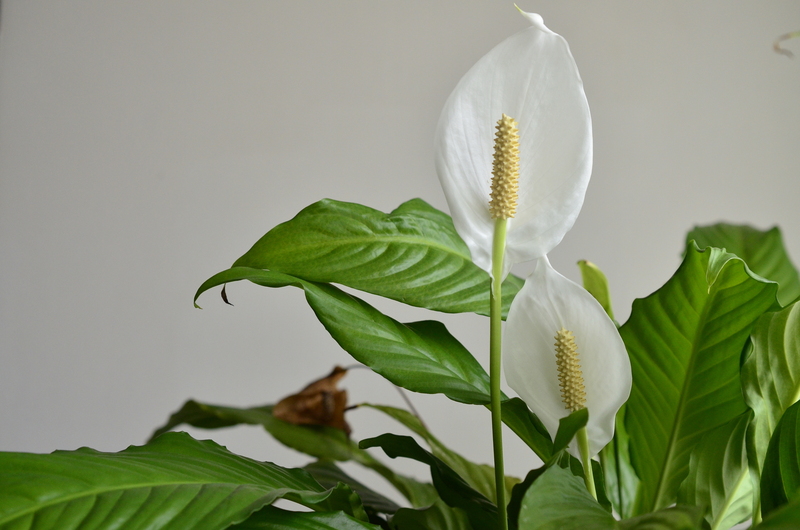Sowing Seeds and Dog Joy: Tips for Pet-Friendly Gardening Spaces
Posted on 22/06/2025
Sowing Seeds and Dog Joy: Tips for Pet-Friendly Gardening Spaces
Gardening is a beloved pastime for many, but sharing your green space with a four-legged friend brings unique challenges and delights. Whether you're starting from scratch, planning to sow seeds this spring, or hoping to revitalize an existing oasis, designing a dog-friendly gardening space ensures everyone--pup included--can enjoy the beauty and serenity of the outdoors. In this guide, we'll blend practical gardening advice, knowledge of pet-safe plants, and thoughtful design principles, so you can nurture both your plants and your canine companion.
Why Create a Pet-Friendly Garden?
Pets, especially dogs, are curious by nature. A pet-friendly garden allows your furry friend to safely investigate scents, textures, and creatures without risk to their health or to your precious plants. The benefits are mutual: dogs have an outlet for energy, reducing destructive behaviors, while gardeners can relax knowing their outdoor investment--and their pup--are secure.
- Enrichment: Promote physical and mental stimulation for your pet.
- Safety: Avoid toxic plants and dangerous landscaping features.
- Harmony: Minimize dog-induced garden damage (digging, trampling, chewing).
- Aesthetic: Enjoy a lush, vibrant garden you and your pet can explore together.

Step 1: Understanding Your Dog's Needs
To cultivate dog joy in your gardening space, consider your dog's personality, breed traits, and habits. Are they diggers? Do they like to patrol boundaries? Perhaps your dog seeks cool shade or loves to chase butterflies? Observing how your dog uses the outdoors will guide plant placement and pathway design for harmonious coexistence.
Common Dog Behaviors to Accommodate
- Digging: Many dogs dig, especially certain breeds. Channel this urge constructively.
- Chewing: Remove toxic or tempting plants and objects.
- Running/Patrolling: Allow open pathways around boundaries, especially for active breeds.
- Lounging: Dogs love cool, shaded areas for rest.
Step 2: Planning a Safe Pet-Friendly Garden Layout
Paths and Play Spaces
Design wide, paw-friendly garden paths using mulch, pea gravel, or flagstones with smooth edges. Winding routes offer adventure, while a clear perimeter encourages natural patrolling. Set aside a 'dog zone'--a designated area for digging or relaxing--so your dog knows where play is on-limits.
- Use durable materials that withstand traffic and don't heat up excessively in the sun.
- Soft grass patches are ideal for play and lounging.
- Install agility features (like tunnels or logs) for active canines.
Garden Borders and Raised Beds
Define flower beds with robust borders. Raised beds make it harder for dogs to enter off-limit areas, protect delicate plants, and offer an outline your dog can learn to respect. Brick, wood, or stone edging reinforces boundaries without harming sensitive paws.
Water Features and Safety
A bubbling fountain, birdbath, or splash pool brings sensory joy for dogs and visual interest for gardeners. Always supervise dogs around water and ensure features are shallow, non-toxic, and easy to clean to prevent accidents and algae growth.
Step 3: Selecting Dog-Safe Plants for the Garden
Not all plants are created equal--some popular garden staples are toxic to dogs if ingested. As you sow seeds and plan your dog-friendly landscaping, choose pet-safe flowers, shrubs, and ground covers.
Popular Pet-Safe Plants
- Sunflowers: Hardy and non-toxic--plus, seeds attract birds!
- Snapdragons: Colorful, dog-safe, and easy to grow from seed.
- Marigolds: Bright, cheerful, and often used to deter pests.
- Camellias: Safe for dogs and a beautiful evergreen choice.
- Rosemary and Basil: Edible for both humans and pets; aromatic foliage deters insects.
- Blueberry Bushes: Delicious and non-toxic--great for adventurous pups!
- Fescue and Buffalo Grass: Durable, soft lawns withstand canine traffic.
Plants to Avoid
- Azaleas, Rhododendrons, Foxglove: All highly toxic to dogs.
- Daffodils, Tulips, and Hyacinths: Beautiful but dangerous bulbs.
- Lilies and Sago Palms: Even small amounts can be harmful.
- Oleander and Nightshade: Extremely poisonous if nibbled or chewed.
Tip: Research any unfamiliar species before planting, and monitor your dog as your garden evolves.
Step 4: Sowing Seeds and Planting with Dogs in Mind
When sowing seeds for your pet-friendly garden, timing, location, and protection are crucial. Dogs are naturally curious about fresh soil and scents. Protect new seedlings by using temporary fencing or garden cloches until roots are established.
Best Practices for Sowing Seeds Near Pets
- Sow densely in raised beds to maximize growth and minimize trampling.
- Use seed starting trays and transplant hardy seedlings inside boundaries.
- Apply gentle mulch (like bark or straw) to retain moisture and discourage digging.
- Mark off freshly seeded areas with decorative fencing or visible markers.
Pro tip: Involve your dog in the process! Gentle walks and observation help them acclimate to new beds and boundaries.
Step 5: Training Dogs for Garden Success
Even the best-designed pet-friendly garden needs a well-trained dog. Teaching your canine companion garden manners is essential for harmony--and for the safety of your favorite blooms.
Effective Training Strategies
- Positive reinforcement: Reward your dog for respectful exploration and for staying within allowed zones.
- Clear boundaries: Use path edging, deterrent scents (like citrus), or non-harmful deterrent sprays.
- Supervised play: Watch your dog in the garden, especially during the early months of new planting.
- Redirection: If your dog digs in forbidden spots, guide them to the designated digging pit.
Remember: Patience is key--consistency and encouragement foster long-term, respectful habits.
Step 6: Maintaining a Healthy, Harmonious Space
Safe Fertilizers, Mulches, and Pest Control
Always choose non-toxic garden products when pets use your garden. Many common fertilizers, pesticides, and mulches are harmful if ingested. Look for organic or pet-safe certifications and avoid cocoa mulch, certain snail baits, and chemical herbicides.
Seasonal Checks and Garden Cleanliness
- Inspect for hazards like thorns, sharp tools, or fallen branches after storms.
- Pick up dog waste regularly to keep your soil and plants healthy.
- Monitor plant health--a sick or infested plant can attract curious pups or encourage digging.
Creative Ideas for Dog-Inclusive Gardens
Beyond the basics, celebrate your love for gardening--and your dog--by adding personalized pet features that transform the outdoors into a true haven.
- Canine sensory gardens: Include pet-safe herbs (mint, lavender) and tactile ground covers (like chamomile lawns) for interactive sniffing and rolling.
- Pup-sized play tunnels: Hollow logs or commercially available agility tunnels fit beautifully into garden beds.
- Shade cabanas and dog houses: Camouflage cooling retreats with dense shrubs or trellised vines.
- Training platforms: Incorporate flat stones or wooden steps as practice spots for commands or photo ops.
- Paw-print stepping stones: Personalize pathways as a playful touch.
Bonus: Involve kids in creating dog-themed garden art or painted fence posts for enrichment and fun!

Common FAQs for Sowing Seeds and Dog Joy
- Can my dog eat grass and garden plants safely?
While some grass and select plants are safe in moderation, supervise your dog and educate yourself about toxic varieties. If your dog is prone to eating non-food plants, consider adding pet-safe edible greens like wheatgrass for nibbling. - How do I prevent my dog from digging up seeded beds?
Provide a dedicated digging area, reinforce boundaries with barriers, and reward your dog for appropriate behavior. Temporary fencing or scent deterrents can help during the seedling stage. - Are mulch and compost piles safe for dogs?
Use only non-toxic mulches (avoid cocoa hulls), and keep compost piles secure--decomposing matter can attract dogs and may contain harmful substances. - What should I do if my dog eats a toxic plant?
Immediately contact your veterinarian or the ASPCA Animal Poison Control Center. Familiarize yourself with common toxic species and keep them out of your garden.
Conclusion: Grow Dog Joy Alongside Garden Beauty
A dog-friendly gardening space is a labor of love that rewards you with a vibrant, living landscape where every member of the family thrives. By sowing seeds that are safe, planning thoughtful layouts, and celebrating your dog's natural instincts, you'll create an outdoor haven brimming not just with blossoms--but with pure canine joy. Embrace the journey of gardening with your dog and look forward to seasons filled with paws in the sunshine, peaceful afternoons by newly planted blooms, and the deep bond fostered by stewardship of the earth, side by side.
Ready to sow the seeds of a lasting friendship between your pet and your garden? Start planning today, and transform your backyard into a blooming paradise both you and your dog will love!

